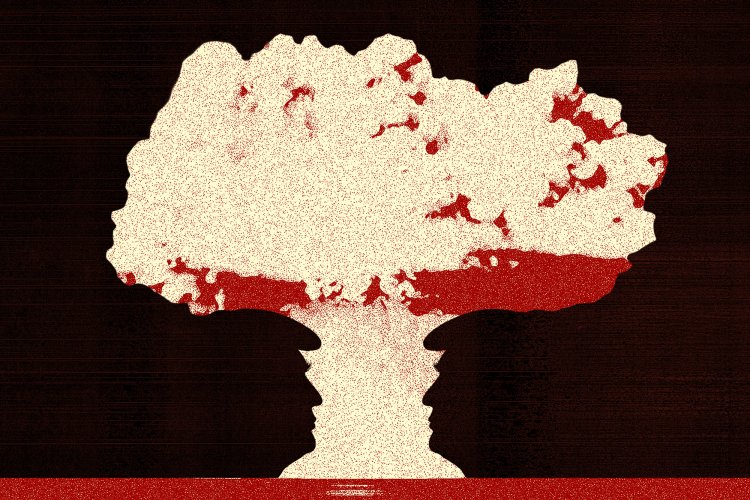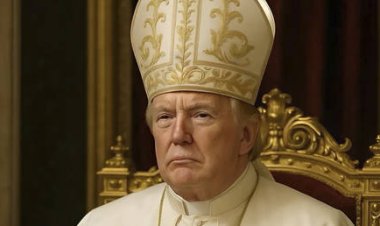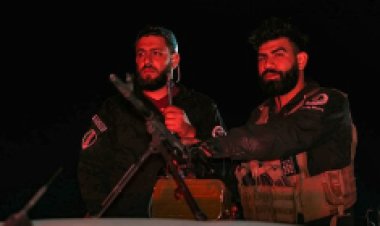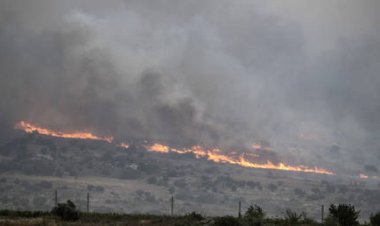Trump's Approaching Era of Nuclear Weapons
The possibility of a U.S. withdrawal has led nations globally, including Germany and South Korea, to discuss the development of their own nuclear arsenals.

Since then, Trump has consistently discussed the importance of addressing the dangers posed by nuclear weapons. During his first presidential term, shortly before the controversial 2018 summit with Vladimir Putin in Helsinki, he referred to nuclear arms as “the biggest problem in the world” and articulated his aspirations to the press: “No more nuclear weapons anywhere in the world.” In his second term, he has repeatedly voiced alarms about the potential for “World War III,” and in mid-February, he stated, “There’s no reason for us to be building brand new nuclear weapons. We already have so many.”
It is perplexing, therefore, to recognize that just a few months into his presidency, Trump has initiated a reverse trend, leading to what could be the quickest and most perilous increase of nuclear arms proliferation worldwide since the early Cold War.
The emergence of new nuclear powers extends beyond the rogue states traditionally cited by the U.S., such as Iran and North Korea. An increasing number of long-time U.S. allies, including Germany, South Korea, Japan, and Saudi Arabia, are now contemplating the acquisition of nuclear capabilities. Faced with a potential U.S. retreat from its defense commitments, these nations are discussing their own nuclear options more openly and are even considering deploying weapons if conflicts arise.
There’s little indication that the flurry of activity, which Trump has termed “the most successful” start to any presidency in U.S. history, has led his administration to confront the implications of these contradictory policies.
James Hewitt, a spokesperson for the National Security Council, did not directly address inquiries regarding Trump's stance on nuclear armament among allies as they take on more regional defense responsibilities. Instead, he stated: “President Trump has repeatedly warned that nuclear destruction is the biggest threat to humanity and is committed to a policy that promotes nuclear nonproliferation around the world.”
Despite this assertion, nuclear experts point out that the Trump administration has a shortage of personnel in key positions to tackle nuclear proliferation concerns. Many nominees to crucial roles in the Defense and State Departments and the National Nuclear Security Administration are awaiting confirmation, and the post of senior director for arms control on the National Security Council remains unfilled.
Matt Costlow, who served in the Pentagon’s Office of Nuclear and Missile Defense Policy during Trump’s first term, remarked, “I’ve heard it’s a pure ghost town. There’s just no one there. And the staff that is there is spread so thin it’s causing this paralysis.” He added, “I don't know that the Trump administration yet has a set view on the desirability of allies going nuclear. I think there’s a mix of views.”
The signals indicating a global drawdown of the U.S. defense umbrella have contributed to a surge in discussions about nuclear armament across various countries. Beijing has taken note, with Chinese officials growing apprehensive about “regional security fragmenting” and the increased likelihood of encountering more nuclear or “nuclear-latent” nations in Asia. Francesca Giovannini, head of the Project on Managing the Atom at Harvard’s Kennedy School of Government, reported that Chinese officials expressed concern about the lack of clarity regarding who will oversee arms control negotiations under Trump, fearing the administration's lack of expertise in the matter.
Elbridge Colby, recently confirmed as Undersecretary of Defense for Policy, is among those advocating for European and Asian allies to bolster their own defense capabilities. He has urged South Korea to take “primary, essentially overwhelming, responsibility” for its defense, suggesting no sanctions should follow if Seoul opts for a nuclear program. Colby noted, “It would not be rational to lose multiple American cities to just deal with North Korea.” In Senate testimony, he also stated that Trump believes Taiwan must increase its defense spending significantly to deter war with China—an increase that Taiwanese Premier Cho Jung-tai deemed “impossible.”
U.S. allies increasingly feel that Trump is abandoning the postwar global system, risking a return to a fierce power struggle where larger nations dominate their regions, leaving smaller states to fend for themselves. Secretary of State Marco Rubio acknowledged this in a January interview, effectively conceding that the U.S. global dominance was “an anomaly” born from the end of the Cold War, stating, “eventually you were going to reach back to a point where you had a multipolar world.”
Karl Friedhoff, an expert in East Asian security at the Chicago Council on Global Affairs, expressed that the U.S. message implies spheres of influence, saying, “Russia can have Ukraine. China can have Taiwan.”
Such developments have led national security experts to warn that this period may be among the most unstable since the early Cold War, potentially resulting in a greater number of nuclear weapons in diverse locations.
The nature of nuclear threats today is evolving, diverging significantly from the dangers posed during the Cold War. For decades, the U.S. and the Soviet Union amassed vast arsenals of nuclear missiles capable of launching from air, ground, or sea, ultimately leading both nations to negotiate arms control agreements that reduced their stockpiles.
In contrast to the Trump administration’s seemingly hands-off approach to arms control—characterized by the withdrawal from multiple nuclear agreements, including the 1987 Intermediate-Range Nuclear Forces Treaty—successive U.S. presidents dating back to the 1950s have actively sought to prevent the emergence of new nuclear states. The U.S. led extensive diplomatic efforts to contain nuclear weapons proliferation during the Cold War and beyond.
In the 1950s and 1960s, “30 to 40 countries started nuclear energy programs with an eye to actual military applications,” noted Brad Roberts, director of the Center for Global Security Research at Lawrence Livermore National Laboratory. Inspired by Dwight Eisenhower’s “Atoms for Peace” initiative, John F. Kennedy and Lyndon Johnson vigorously supported the Nuclear Non-Proliferation Treaty (NPT), which was signed in 1970 and has become foundational for global nuclear non-proliferation, with 191 nations as signatories.
During the late 1980s and early 1990s, fears arose that the dissolution of the Soviet Union might leave loose nuclear weapons with newly independent states. Consequently, Ukraine, Kazakhstan, and Belarus were persuaded to relinquish the nuclear weapons stationed on their territories. In 1998, President Bill Clinton pleaded with Pakistani Prime Minister Nawaz Sharif to refrain from conducting a nuclear test, imposing sanctions when Sharif declined. Eventually, the Clinton administration succeeded in extending the NPT from 25 years to an indefinite term. Nations that abandoned active nuclear weapons programs include South Africa, Taiwan, South Korea, Brazil, Argentina, Sweden, Italy, Yugoslavia, Switzerland, and Australia.
Today, due in large part to these diplomatic efforts, there remain only nine recognized nuclear powers: the U.S., Russia, China, France, Britain, India, Pakistan, Israel, and North Korea.
However, some countries that previously renounced their nuclear programs are now reconsidering such decisions, alongside new potential nuclear aspirants. What Trump’s administration will do in response to these changing dynamics remains uncertain. When discussing “denuclearization,” Trump tends to focus on the original nuclear powers, which possess the largest arsenals, treating nuclear arms control as an issue that superpower leaders can negotiate among themselves.
Increasingly, though, nuclear capabilities are being sought by nations that are not global superpowers but rather face regional threats, such as Russia in Europe or Iran in the Middle East. This evolving reality presents a region-by-region strategic puzzle with significant global implications.
In Europe, discussions around nuclear weapons have become more prominent. In Germany, Friedrich Merz, the likely next chancellor, has not dismissed the prospect of developing nuclear weapons and mentioned initiating conversations about extending French and British nuclear deterrents to Germany. Polish Prime Minister Donald Tusk became the first leader to hint at a similar path, suggesting his country should “reach for opportunities related to nuclear weapons” and critiquing Ukraine’s decision to the relinquish its nuclear arsenal in the 1990s as a misstep.
Ukraine’s President Volodymyr Zelenskyy has suggested that the country might need to reestablish a nuclear deterrent, stating: “Either Ukraine will have nuclear weapons, and then it will be a defense for us, or Ukraine will be in NATO.” Reports indicated that Trump had conveyed to Zelenskyy that his reasoning was “fair,” but U.S. officials later declared that Ukraine would not be joining NATO.
In the Middle East, concerns are rising over Iran’s nuclear ambitions, particularly after Trump withdrew from an agreement established by the previous administration that had curbed Iran’s nuclear program. Since the withdrawal, Iran has accelerated its program, reportedly nearing the capacity to produce weapons-grade uranium. Turkish President Recep Tayyip Erdoğan and Saudi Crown Prince Mohammed bin Salman have signaled that they would seek to replicate Iranian capabilities should Tehran acquire a nuclear weapon.
In East Asia, the policy under the Trump administration is less explicit. Defense Secretary Pete Hegseth highlighted Japan as an “indispensable partner in deterring Communist Chinese military aggression,” while simultaneously pressuring Asian allies to strengthen their defenses. This evolving dynamic has led to a growing willingness among nations like South Korea and Japan—where discussions around nuclear weapons were once unthinkable—to embrace nuclear capabilities.
Despite the complexities involved in transitioning from mere discussion to actual nuclear weapon development, experts assert that the current willingness among nations to consider nuclear options represents a significant shift in the geopolitical landscape. As nations navigate this evolving environment, the next few months may reveal how the Trump administration signals its policies concerning nuclear armament and defense commitments to its allies.As the geopolitical landscape continues to shift, the implications of discussions around nuclear armament are profound. The potential for nuclear capability among countries that have traditionally shied away from such weapons introduces a new layer of complexity to global security dynamics. Observers caution that while the talks may not immediately lead to the actual development of nuclear arsenals, they signal a marked change in the strategic calculations of U.S. allies and adversaries alike.
In Europe, the reconsideration of nuclear options reflects underlying concerns about U.S. reliability as a security partner. The fear of abandonment, particularly in light of Russia's aggressive posture, is spurring nations like Germany and Poland to reassess their defense strategies. The traditional reliance on U.S. nuclear guarantees is no longer seen as sufficient assurance, leading to growing conversations about self-reliance in nuclear capabilities. With NATO's collective defense commitments in question due to changes in U.S. policy, the potential for a European arms race looms larger.
In Asia, the discussions are similarly fraught. North Korea's continued development of its nuclear arsenal and China's expansive military capabilities are pushing nations like South Korea and Japan to contemplate nuclear latency—a state where they could quickly develop nuclear weapons if needed. The recent political shifts in North Asia have encouraged these allies to rethink their security postures and consider bolstering their military capabilities urgently.
While nations like Japan and South Korea have their historical and political reasons for hesitating to go nuclear, the current security environment is forcing a reconsideration of what was once deemed politically unacceptable. As prominent figures call for nuclear sharing and expanded defense budgets, reliance on the U.S. nuclear umbrella is being questioned, raising debates over potential nuclearization that could extend beyond their borders.
One critical factor contributing to the shifting perceptions is the evolution of regional conflicts and the perceived failure of traditional diplomatic frameworks. Countries now view the nuclear question through the lens of their immediate security threats, whether from neighboring rivals or regional powers. The rapid developments in Iran's nuclear aspirations have further exacerbated tensions in the Middle East, pushing nations like Turkey and Saudi Arabia to reassess their own nuclear strategies in a potential arms race.
Experts warn that as nuclear signaling becomes more prevalent, the concept of nuclear deterrence may become more intricate. This new context challenges conventional wisdom about nuclear deterrence and mutual assured destruction, as nations may feel compelled to bolster their arsenals simply to remain competitive.
The transition from discussion to realization of nuclear programs is formidable. The complexities involved can deter nations from fully committing to such an endeavor, especially given the political and economic ramifications associated with violating the Nuclear Non-Proliferation Treaty (NPT). Countries that pursue nuclear weapons risk significant international backlash, including sanctions and ostracism from the international community.
Yet, as Costlow insightfully noted, the initial discussions around nuclear capabilities could represent the first steps toward significant military advancements. Countries that initiate nuclear conversations may rapidly negotiate the first hurdles, paving the way for eventual capabilities. This preliminary stage can serve as a critical juncture, leading to deeper commitments that could reshape regional and international security dynamics.
As the U.S. grapples with its own nuclear strategy and relations with allies, its approach will heavily influence how global nuclear discussions evolve. The Biden administration’s policies may diverge further from Trump’s legacy, with potential implications for the direction of arms control, informal pacts, and regional security arrangements.
In this climate of uncertainty, where the deterrent capabilities of traditional nuclear powers are slowly shifting, the role of U.S. leadership in global nuclear policy will become increasingly pivotal. Global leaders are keenly observant of the signals coming from Washington, contemplating how U.S. policy will shape their own strategic decisions in the coming years.
The stakes are high, and for countries drawn into considerations of nuclear capability—as well as those standing on the threshold—the road ahead promises to be fraught with both risks and opportunities. Each nation must balance the desire for security against the broader implications for global stability, including the chances of exciting a new arms race or, alternatively, silencing those calls for nuclear armament through robust diplomacy and renewed commitments to nuclear non-proliferation. As history shows, the decisions made in the coming months could have profound ramifications for decades to come.
Debra A Smith for TROIB News












